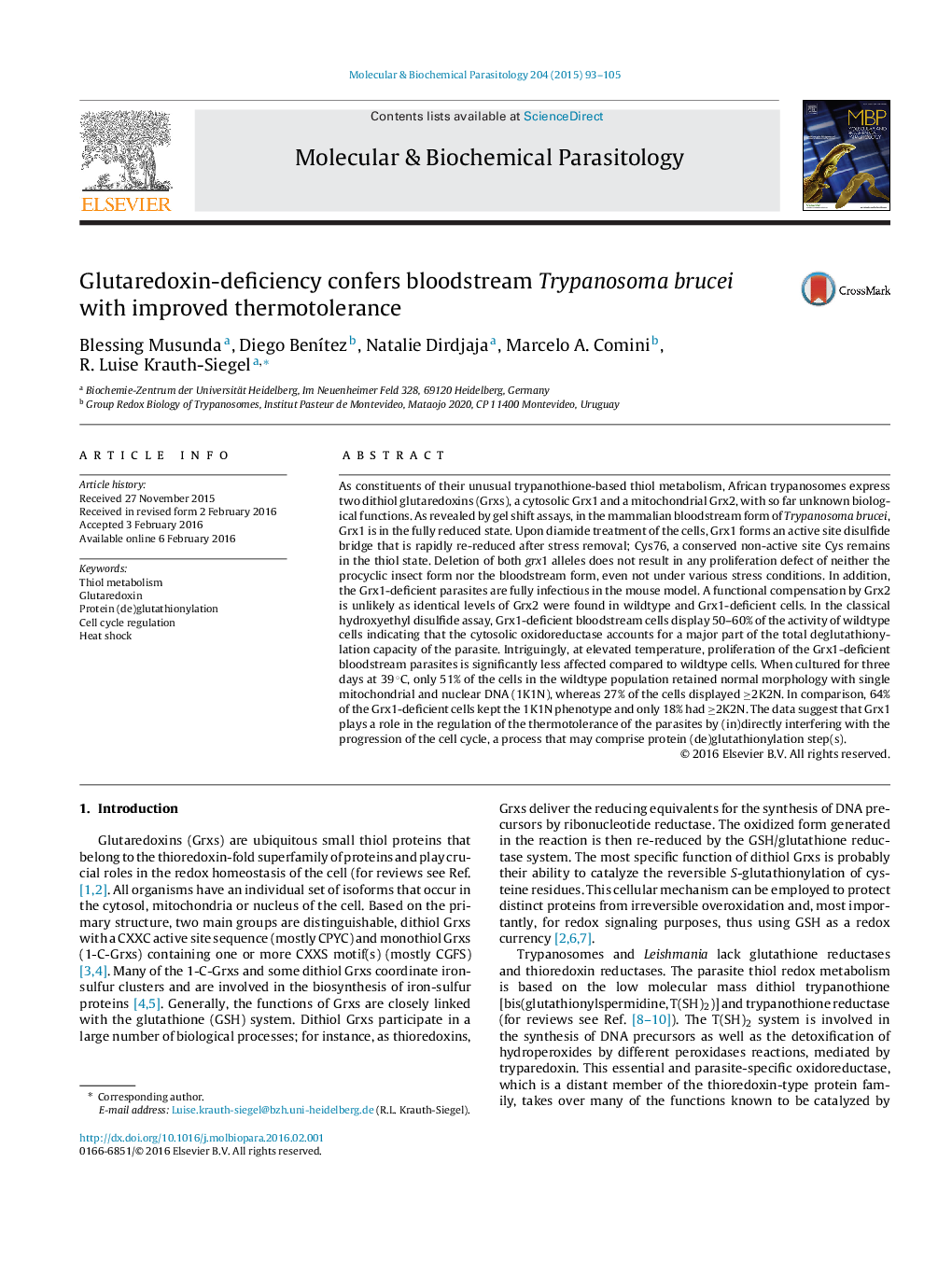| کد مقاله | کد نشریه | سال انتشار | مقاله انگلیسی | نسخه تمام متن |
|---|---|---|---|---|
| 2829722 | 1163279 | 2015 | 13 صفحه PDF | دانلود رایگان |
• Glutaredoxin is dispensable for in vitro and in vivo growth of Trypanosoma brucei.
• Glutaredoxin accounts for nearly half of the total cellular deglutathionylation capacity.
• Glutaredoxin deficiency confers thermotolerance to bloodstream parasites.
As constituents of their unusual trypanothione-based thiol metabolism, African trypanosomes express two dithiol glutaredoxins (Grxs), a cytosolic Grx1 and a mitochondrial Grx2, with so far unknown biological functions. As revealed by gel shift assays, in the mammalian bloodstream form of Trypanosoma brucei, Grx1 is in the fully reduced state. Upon diamide treatment of the cells, Grx1 forms an active site disulfide bridge that is rapidly re-reduced after stress removal; Cys76, a conserved non-active site Cys remains in the thiol state. Deletion of both grx1 alleles does not result in any proliferation defect of neither the procyclic insect form nor the bloodstream form, even not under various stress conditions. In addition, the Grx1-deficient parasites are fully infectious in the mouse model. A functional compensation by Grx2 is unlikely as identical levels of Grx2 were found in wildtype and Grx1-deficient cells. In the classical hydroxyethyl disulfide assay, Grx1-deficient bloodstream cells display 50–60% of the activity of wildtype cells indicating that the cytosolic oxidoreductase accounts for a major part of the total deglutathionylation capacity of the parasite. Intriguingly, at elevated temperature, proliferation of the Grx1-deficient bloodstream parasites is significantly less affected compared to wildtype cells. When cultured for three days at 39 °C, only 51% of the cells in the wildtype population retained normal morphology with single mitochondrial and nuclear DNA (1K1N), whereas 27% of the cells displayed ≥2K2N. In comparison, 64% of the Grx1-deficient cells kept the 1K1N phenotype and only 18% had ≥2K2N. The data suggest that Grx1 plays a role in the regulation of the thermotolerance of the parasites by (in)directly interfering with the progression of the cell cycle, a process that may comprise protein (de)glutathionylation step(s).
Figure optionsDownload high-quality image (115 K)Download as PowerPoint slide
Journal: Molecular and Biochemical Parasitology - Volume 204, Issue 2, December 2015, Pages 93–105
